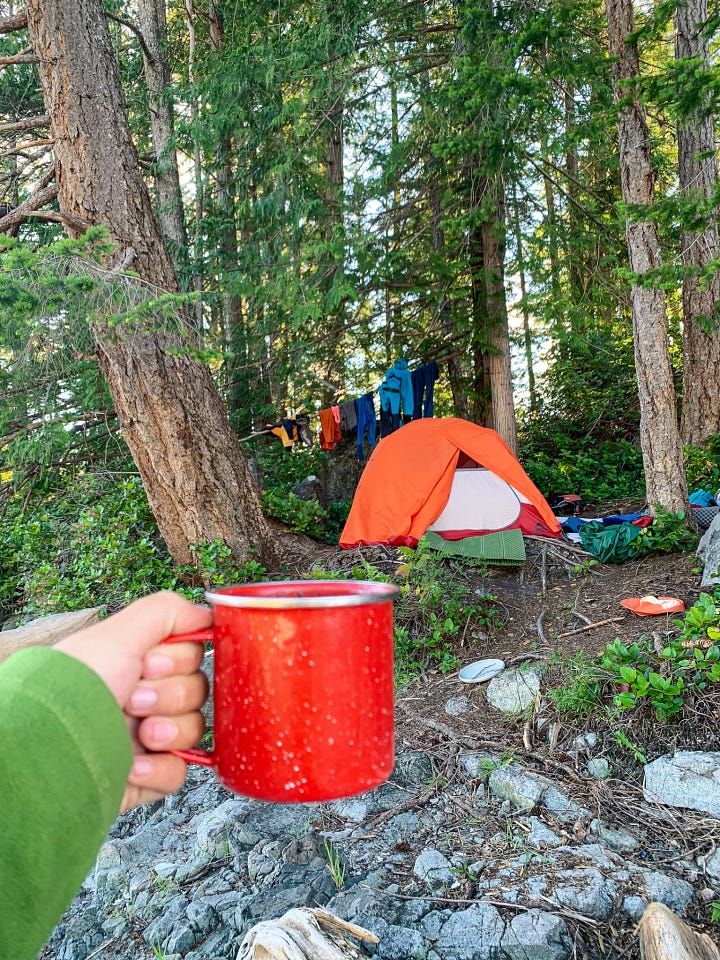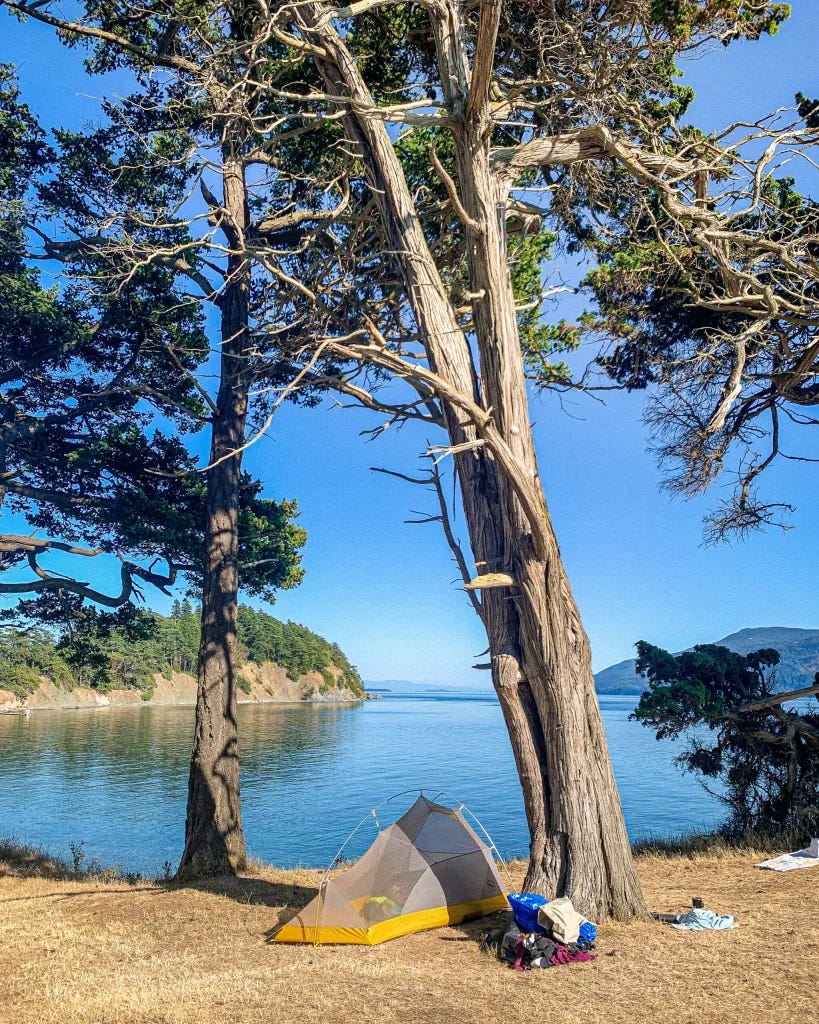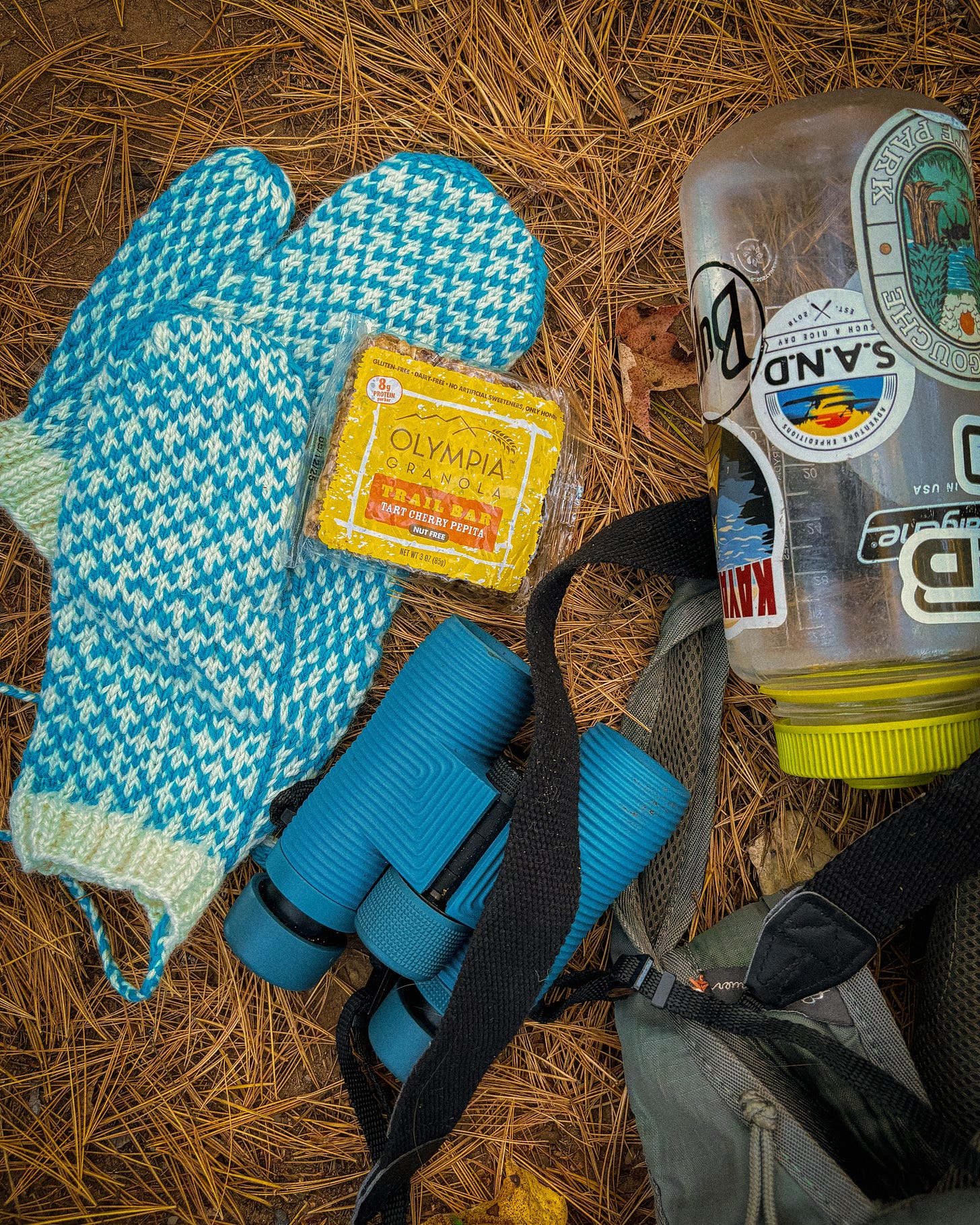Hi from a weird week, for everyone it seems like. This week I went cross country skiing for the first time in a while and felt like a baby giraffe on ice skates. Notably, I went after work which is a big step for me, reclaiming my “PM” hours. It’s now light enough that I have an hour and a half of daylight to spare— it’s hard to remember to use it. I like cozy season, sinking into audiobooks and elderberry tea and knitting. Making a different soup recipe every day; five books in the month of December.
That part of winter is gone though. I’m on to the winter I’ve grown to love, winter hiking, sun on snow, pizza nights and sunsets at 5:30 and chasing moments of spring breeze. Except I’m not ready for it this year— I’ve enjoyed the deep winter and the dark more than I have before, and moving on to the blue and yellow “hey I’m alive and it’s winter” part isn’t quite something I’m ready for.
Does this make any sense at all? It’s okay if it doesn’t. Here up on Superior the seasons feel really rhythmic and very much a part of life. That is the thing I love most about here.
Still, I find myself daydreaming about summer. It’s not quite to the desperate itch it will be by March, but I’m thinking about it.
oh hey there! this newsletter contains affiliate links. That just means if you choose to make a purchase through one of my links, I make a small kickback at no additional cost to you.
vagabond life as told by tents i’ve lived in…
I know my life looks super settled and comfortable online, but until this October I hadn’t lived anywhere longer than six months since 2018. In fact, the last three summers I’ve lived in a tent. I might have an office and a cushy cute house now, but rest assured I am in fact a dirtbag.
MSR Remote Three: 70 days of sea kayaking British Columbia
Summer 2022 was the true beginning of my Dirtbag Era, when Andy and I decided to quit our jobs and literally move into kayaks for the summer, which we totally did.
We spent two and a half months exploring the coast of British Columbia, and home was an MSR Remote Three. And it was wonderful.


I think is the most I’ve ever been able to feel my life, if you know what I mean? After the first few weeks we settled on loose route plans and just sort of wandered by kayak, paddling about 12-20 miles a day, learning the tides and experiencing what it’s like to truly live out of a kayak. It was an expedition trip, sure, but in hindsight it ended up being redefining what a meaningful experience actually looks like, and what aspects of life are actually important.
More than anything though, living out of a tent and a kayak in a way so deeply at the mercy of the tides and rhythms of the earth I gained a deep, deep appreciation for how complex our planet is and how much math1 is everywhere. [you can read all the live blog posts I wrote from this trip here]
REI Wonderland 6: Summer housing on San Juan Island
After British Columbia we (briefly) set our long-term sights on the West Coast— to say that I fell absolutely in love with the tides, with the massive whirlpools and strange currents caused by the moon and centrifugal force, is an understatement. I am, even now, enamored with them.
We moved out west to spend a summer guiding on the San Juan Islands, and rather than pay a couple thousand a month for an apartment we wouldn’t use while we were out overnight guiding in the islands, we moved into an REI Wonderland 6, which we lived in almost five months. Dirtbag era indeed.



But truly it wasn’t so bad and it certainly wasn’t dirty.2 We set up one of those Exped sleeping pads that are more comfortable than most beds. We had solar powered string lights rigged up to the ceiling and basically had lighting inside. The mudroom attachment meant that we could set up a table and chairs out of the rain to cook on and hang out under, and we could both walk in the Wonderland. Plus, the zip-off window vents kept it cool when it was hot, and held up in all the weather. When we moved back into an apartment that fall I really, truly missed our tent. If I’m ranking places we lived, this ranks above 2/3 of our apartments for real.3
Big Agnes Fly Creek: my forever home
I like to joke that I’m a homeowner… in that my tents are homes. And my itty bitty Big Agnes Fly Creek UL2 has been with me for seven years, through thick and thin.
She’s been to the mountains in Armenia and the Grand Canyon, and spent well over 100 nights kayak camping alone. It’s held up so well and even though it kind of permanently smells, I love it deeply.
Small business spotlight: Olympia Granola
This September, I had a really really bad day. I posted about it on Instagram, and Olympia Granola messaged me and asked if they could send me some of their gluten-free granola to make my day better, which to this day makes me smile whenever I think about it.
Olympia Granola is Wisconsin-based, gluten free, with a focus on all-natural ingredients. On top of just having all-around good vibes, it’s actually delicious too.
New this week…
I’m updating and overhauling all my online outdoor resources for 2025 to make sure everything is ready to go for the summer! This is quite the process; I spent probably two hours every evening after work on it, and a full day of work on the weekend. Here’s what’s fresh this week:
Midwest Spring Break Ideas: start dreaming up your spring plans now, featuring desert spring break ideas, classic tropical options PLUS a number of Road Trip ideas nearer to home
Speaking of road trips, check out my road trip planning guide including meal plan ideas, what to pack, budgeting, and how to pack your car.
Looking for a tent? Check out this detailed guide to choosing the best tent for your needs and budget.
How to use affiliate links: a quick guide for content creators
Odds are, if you’re on the internet you’ve probably seen something about affiliate links. Odds are also pretty good that at some point, whether you’re completely aware of it or not, you’ve purchased something using an affiliate link.
Put simply, affiliate links are the currency of recommendations. Affiliate links allow content creators, bloggers, influencers and publications to make create a link that tracks when someone clicks it, and then attributes any purchases made down the line to that creator who shared the additional link. The creator then makes a small kickback at no additional charge to the purchaser usually 2-10%.
Affiliate links always need to be clearly disclosed, no matter where they are shared. Here’s a quick guide to affiliate linking strategies for content creators.
Affiliate links are a really good way to make money blogging or through social media. In general, you can expect about a 1-2% conversion rate4 per click on a blog, and slightly higher on social media.
First, you’ll need to choose an affiliate link program. One option is Avantlink, which I used for all of 2024 until switching to Rockporch this year. Rockporch is an affiliate link aggregator, so once you have access to Rockporch, you have access to all of the programs they work with rather than having to individually apply. Rockporch has a lot of creator support resources as well, and most importantly to me, double the commission rate for REI of Avantlink. REI is where I make most of my affiliate sales, so this switch alone made a huge difference for me this month.
From here, you’ll want to integrate links into your content where they make sense. I recommend not forcing it; include links in your instagram stories as you actually get recommendation requests (and remember to always disclose!). It’s easy to include a quick packing list in every blog post, and that can be super helpful to readers as well as have a great conversion rate. These are the two biggest affiliate link earners for me, with success heavily weighted toward my blog. I try and limit the affiliate links on Instagram to avoid “over advertising” to my readers.
Affiliate links tend to be most powerful when you have images to go along with them and stories; people prefer to buy gear from someone who can offer an actual meaningful review. Include affiliate links to the tent you’ve had for several years, or the hiking boots you wore until the soles fell off. The backpack you just bought isn’t going to convert purchases.
Along the way, I read the book Tides: The Science and Spirit of the Ocean, and I pretty much can credit this entire book for single-handedly shaping my relationship with and conception of the ocean.
“I could never live in a tent”, sure you could! One thing I’ve found time and time again is that we need so much less than we think we do to be happy. There were definitely times were I didn’t like living in a tent, don’t get me wrong. But over all it was a lot more comfortable than you might expect, and when sea kayak camping the trade off is extremely worth it (ie, kayaking with whales and through sea caves). It was a very low-impact, eco-friendly way to live.
I also want to take a moment to acknowledge what a privilege it is to be able to choose to live in a tent for a period of time; both a privilege in that a lot of people have commitments that prevent them from taking a summer to work a guide job, and a privilege in that many people live in a tent not by choice.
Conversion rate, aka expect 1-5% of the people who click your link to actually buy something, but keep in mind with partners like REI offering that 10% commission with Rockporch and an average order value of nearly $200, you’re looking at about $20 per conversion. That means if you get 2,000 monthly clicks, which with blogging is pretty attainable for even a relatively small content creator, you’ll likely make around $400 monthly. I’ve found my commissions and link clicks to come out to roughly $100 per 1,000 clicks.





